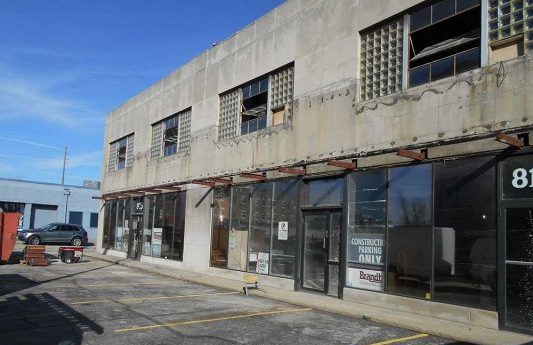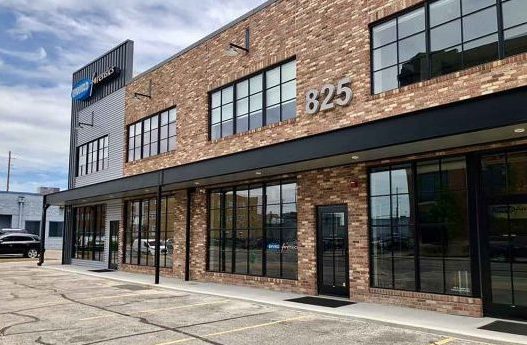Right now, in cities and towns across this nation, abandoned and underutilized properties stand as a reminder of a different time – what are now empty husks of buildings, tall red brick or cement facades, and abandoned industrial corridors were once prosperous properties that provided jobs and economic benefit to their communities.
The expansion, redevelopment, or reuse of these former industrial or commercial sites may be complicated by the presence or potential presence of environmental contamination are known as “Brownfields”. At EnviroForensics, we see the opportunity these sites hold, and we have a unique set of keys to unlock the assets needed to realize the full potential of Brownfields properties. For decades, we’ve been Turning Environmental Liabilities Into Assets®, and overcoming the hurdles surrounding Brownfields development. In 2016, we even developed an abandoned Brownfields site into our new, cutting edge headquarters. Read how we transformed the former Brownfields site into a place focused on conservation, reuse, and being a part of the community.

The Challenges of Developing Brownfields
When looking for a property to develop, municipalities and developers have to make a choice: “Do I search out a pristine ‘greenfield’ property (where little to no real or perceived environmental concerns exist) in the suburbs?”, or “Do I roll the dice and purchase an existing piece of property that may have some environmental concerns due to historic operations?”.
The development or redevelopment of an existing property can be complicated, but as cities are revitalizing their urban cores, and companies are looking for urban space near their future workforce, they are facing their concerns with more focus and interest to solve the potential development challenges. The most common way to bankroll the environmental services needed to bring a Brownfields site back to life is through local, state, and federal grant and loan funding; however, city officials and development corporations often cite the lack of available grant or loan money as their biggest challenge. Even if a project is awarded a grant or loan, those funds come with restrictions and can run out before any meaningful progress is made towards revitalization of the property.
There are several specific challenges that make Brownfields cleanup and development unique when compared to other real estate projects:
1. Environmental Liability Concerns
Brownfields and other contaminated properties carry with them very real concerns and questions about liability:
- Who is responsible for paying for the investigation and cleanup if there is a possibility of historical operations that may have contaminated a property?
- How can a purchaser protect their current and future liability through becoming a Bona Fide Prospective Purchaser (BFPP)? How long does this liability protection last?
- Can a purchaser ensure that their family or business successors will not be burdened with this liability in the future?
2. Financial Barriers: How Much is This Going to Cost?
The hurdle many investors, developers, and municipalities fear from the start of a project is that their funding sources could run short, and they could be left responsible for additional costs or liability. This is often the reason Brownfields properties can sit vacant for decades, adding blight and risk to communities.
Although there are opportunities for grants, tax incentives, and loan packages, they are highly competitive, and are not always the best option to fund a project from start to finish; even if grant money can be applied toward a project, there are often gaps in payment due to the limitations and restrictions of the funding source. For more information on Environmental Protection Agency (EPA) Grants and alternative funding sources, read EPA Announces Millions in Grant Funds–But Who Was Left Out? A supplemental funding source is needed to make sure projects are seen through to completion.
3. Planning for Redevelopment
Often, property owners, municipalities, and developers have plans and visions already conceptualized for the development of a Brownfields property before even starting down the environmental road of performing Phase I, Phase II, and other site investigations as a part of the due diligence process. Unfortunately, this process can uncover environmental concerns that can dramatically change the planned course of a project, and in some cases grant funding sources will only provide enough funding for a minimal amount of cleanup.
For example, let’s say a developer or municipality wants to redevelop a Brownfields property as a multi-tenant mixed-use (commercial and residential) building. They learn that their grant or loan source is limited, which ultimately limits their options for development to commercial or non-occupied land use. This could relegate the property’s potential to nothing more than a parking lot due to outstanding environmental concerns. Where can they find additional funding sources to cleanup the property and bring their original vision to life?
The Missing Key
The bottom line is that there is a limit to the most commonly used avenues of grant and loan funding in the Brownfields world. Additional forms of funding can maximize your development options, can minimize your future liability, and can provide you with the flexibility to apply funding to suit your project’s needs.
This is where PolicyFind™ comes in. PolicyFind, a subsidiary of EnviroForensics, uncovers evidence of historical insurance coverage that can be used to cover both environmental investigation and cleanup costs. To learn more about the insurance archeology process, read How Does It Work: Insurance Archeology and CGL Policies.
In many cases, adding our insurance archeology strategy to your traditional portfolio of funding options can provide you with confidence that the resources needed to complete your development project are sufficient and accessible. Let us help you realize your development visions by helping you add these untapped funding sources to your Brownfields strategy.
Ensure Better Reuse Opportunities with Thorough Environmental Cleanup
A better cleanup means more options for your development project by conducting reasonable and necessary cleanup efforts to remove the risks of exposure to contamination. The use of insurance assets can put your Brownfields project on the fast-track to remediation all without solely relying on traditional grant funding options. This is how EnviroForensics and PolicyFind can help you find the missing key to financing your Brownfields Development.
Brownfields Are An Opportunity For A Promising Future
Despite the perceived challenges, Brownfields don’t have to be a reminder of days gone by, but instead can be seen as the sign of a promising future. Brownfields properties are untapped resources waiting to be revitalized and returned to a meaningful use, all with the added benefit of providing an improved tax base for cities.

A redeveloped property that works to bring new life to an area is more likely to bring new business opportunities, jobs, and tax revenue back to your city.
Learn more about Brownfields development and contact us today!



